From the ground up
When it was established in 1917, the foundation of the Alaska Agricultural College and School of Mines was made clear by its name. The new school in Fairbanks would train students to harvest the state’s resources, whether they were grown from the earth or pulled out of it.
Yet the school that would become the University of Alaska Fairbanks has always had a complicated relationship with agriculture. Federal agriculture science funding was responsible for keeping the college afloat during its lean early years, and UAF research still contributes to Northern farming today. But from the start, the college’s students have largely pursued other subjects — only five students graduated with ag degrees during the 14 years the college prominently featured the word “agriculture” in its name.
The university’s agricultural roots were born about a decade before the university was established. The site where UAF is today was the location of the Fairbanks agricultural experiment station, which was started in 1906 to find crops that could grow in the Interior.
It wasn’t easy. Eight years after the station opened, Superintendent J.W. Neal reported that the chaotic weather in the Tanana Valley was still a constant frustration.
“From observations reported there seem to have been no two seasons alike within a reasonable period of years,” he wrote. “Indeed, the variance is so great that one seldom fails to encounter some unexpected fault in the weather.”
But there were reasons, both practical and financial, why agriculture was emphasized in such a challenging location.
The yaks did not take well to being milked.
You could do it, but it was not very simple.”
Agriculture in the Interior tended to follow mining in Alaska’s early days, since those miners had to be fed. Early agricultural efforts were needed to help support the stream of gold seekers and homesteaders who were moving into the territory.
“Prior to refrigeration you had no choice but to grow a lot of it here,” said Carol Lewis ’76, who retired in 2012 as dean of the School of Natural Resources and Agricultural Sciences and director of the Agricultural and Forestry Experiment Station after a nearly four-decade career. “That’s what you needed to do back then.”
A university that emphasized agriculture also brought badly needed funds to a young school that was perpetually broke. James Wickersham ’35 (Hon.), Alaska’s delegate to Congress, claimed that he accidentally discovered the federal Morrill Acts and figured they’d be a good vehicle for seeding the Alaska Agricultural College and School of Mines. The federal acts, which were designed to promote agriculture, included a gift of land and $50,000 per year.
Annual federal ag funds were the only money the university could really count on in its early decades, according to UAF historian Neil Davis ’55, ’61. In his book “The College Hill Chronicles,” Davis wrote that the funding was “absolutely crucial to opening the doors of the new school on College Hill, and to keeping them open during the early years.”
Farm workers lived in a dormitory on the new campus, and grew various types of hay, brome, oats, barley and wheat. Vegetable crops included legumes, peas and potatoes, along with livestock such as ducks, geese, rabbits, sheep, goats and cattle.
But even as the money flowed, learning how to be an Alaska farmer at the state’s university was never a popular option. Lewis isn’t sure what courses were even offered in the early days, because records about students who studied agriculture during that era are scarce.
“Not many people took those classes,” she said. “It was a hands-on place, and people who worked on a farm at that time weren’t going to go to college.”
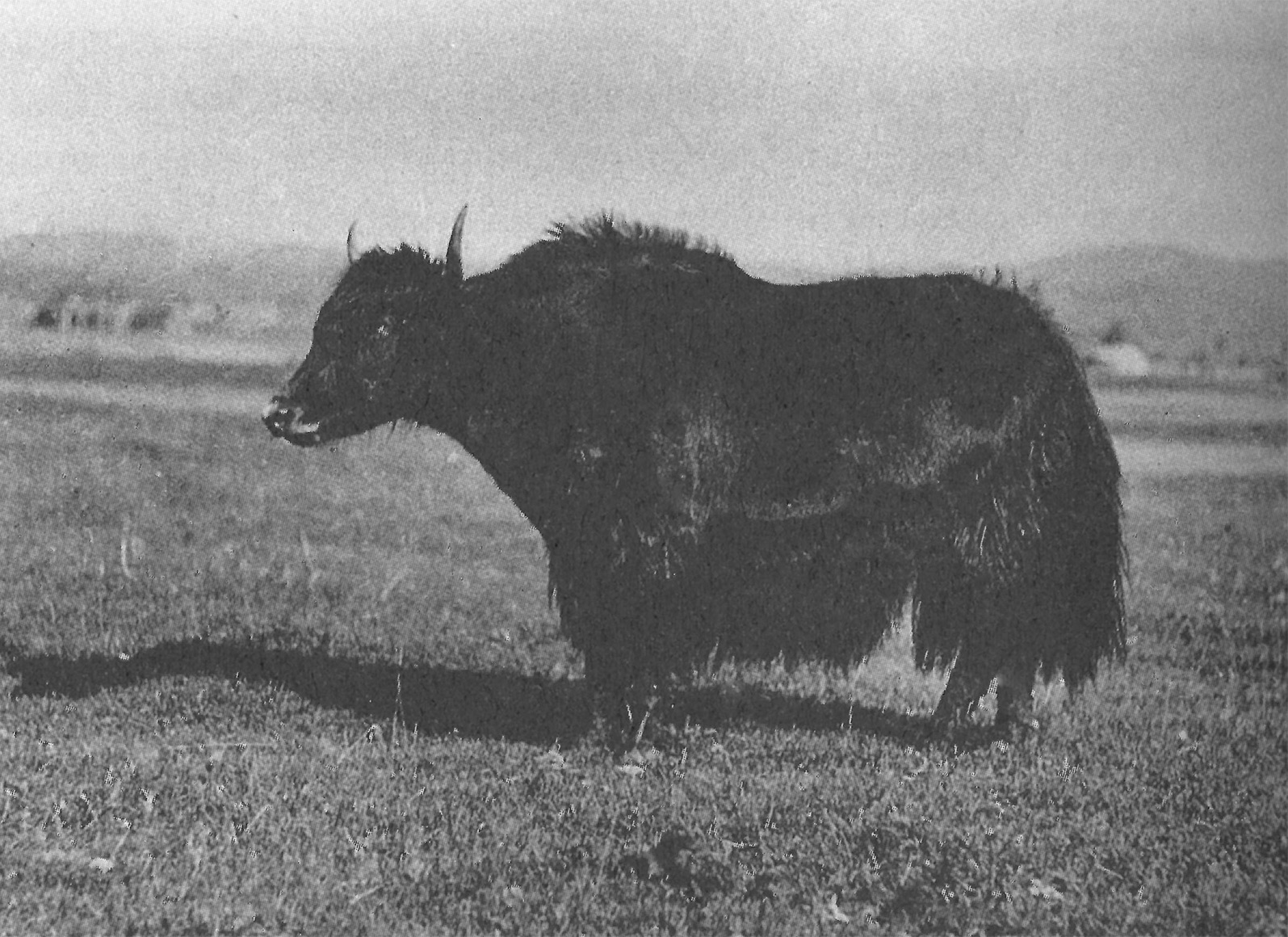
A galloyak roams a Fairbanks Experiment Farm field sometime before 1932. The experimental animals, a cross between Galloway cattle and Tibetan yaks, couldn’t reproduce and so that year made a one-time appearance on the school cafeteria menu.
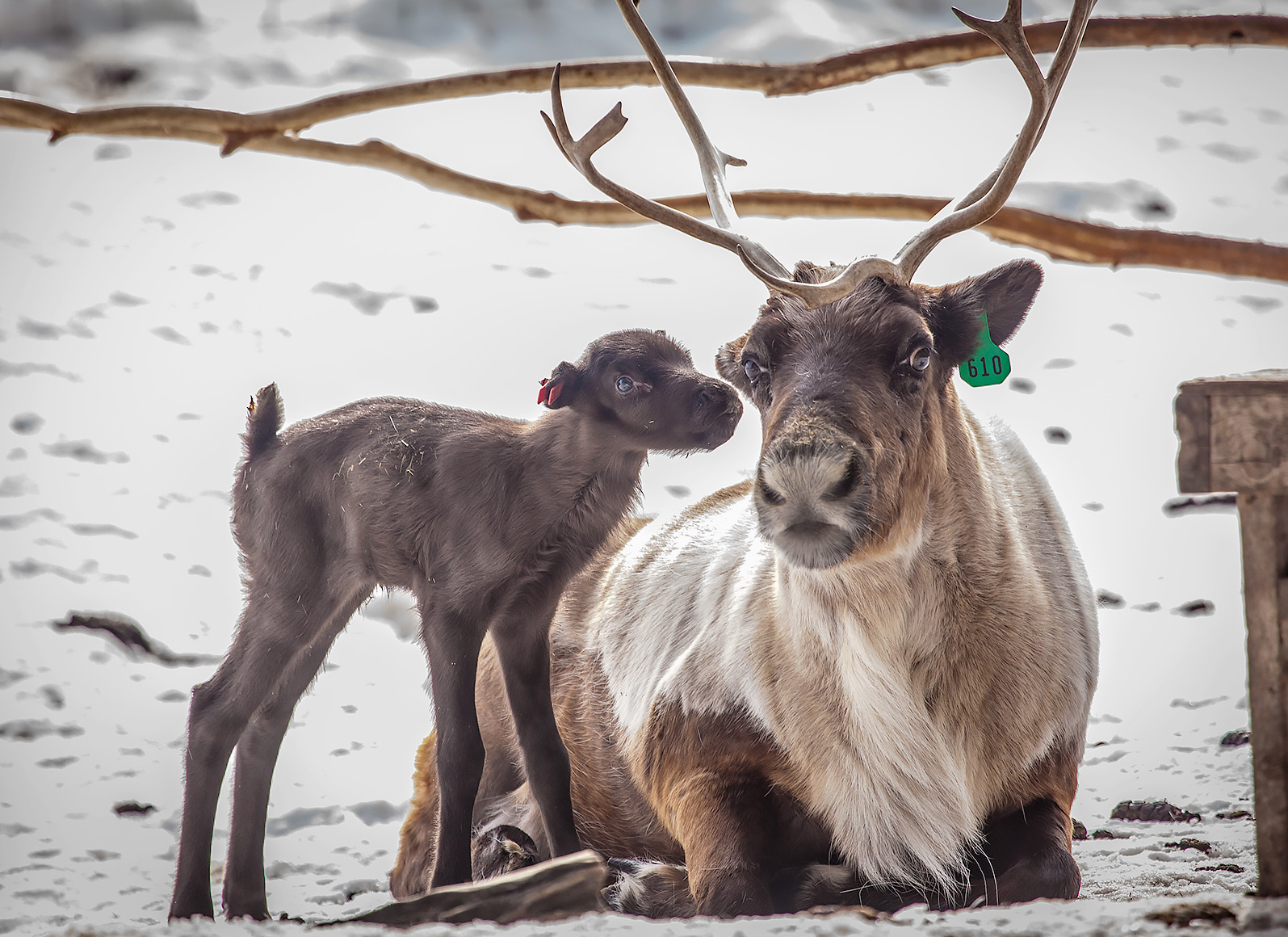
The first reindeer bull calf of the year stands beside his mom in April 2013 at the Fairbanks Experiment Farm.
Although the college had few ag students, the campus was an innovative environment where researchers maintained a willingness to try untested new agriculture techniques. Throughout the university’s history, those efforts ranged from lasting successes to comical failures.
An early project of the respected botanist C.C. Georgeson, who oversaw Alaska’s Agricultural Experiment Stations, was to cross Tibetan yaks with Galloway cattle from Scotland. The result was an experimental breed called galloyaks that could endure cold Alaska winters, according to “The Cornerstone on College Hill,” by UAF Professor Terrence Cole ’76, ’78.
But the era of yaks and their cross-bred cousins was short-lived. Galloyaks couldn’t reproduce, and yaks weren’t enamored with becoming farm animals.
“The yaks did not take well to being milked,” Lewis said. “You could do it, but it was not very simple.”
According to legend, the era of the galloyak came to a sudden end in 1932 when one of the animals broke into the garden of the university’s president, Charles Bunnell. The subsequent winter of galloyak-themed menus revealed another drawback of the animals — the tough meat was almost inedible.
In the years that followed, other livestock efforts were similarly challenging.
A 4-H leader and cooperative extension agent tried to raise chickens in the southwest Alaska village of Aniak, only to discover that their feet would freeze to the ground during bouts of nasty weather. Efforts to conduct hog and dairy cow research flourished during the years when technology in Alaska was equivalent to that in more temperate states, but were halted over time once that work could be done more cheaply in the Lower 48.
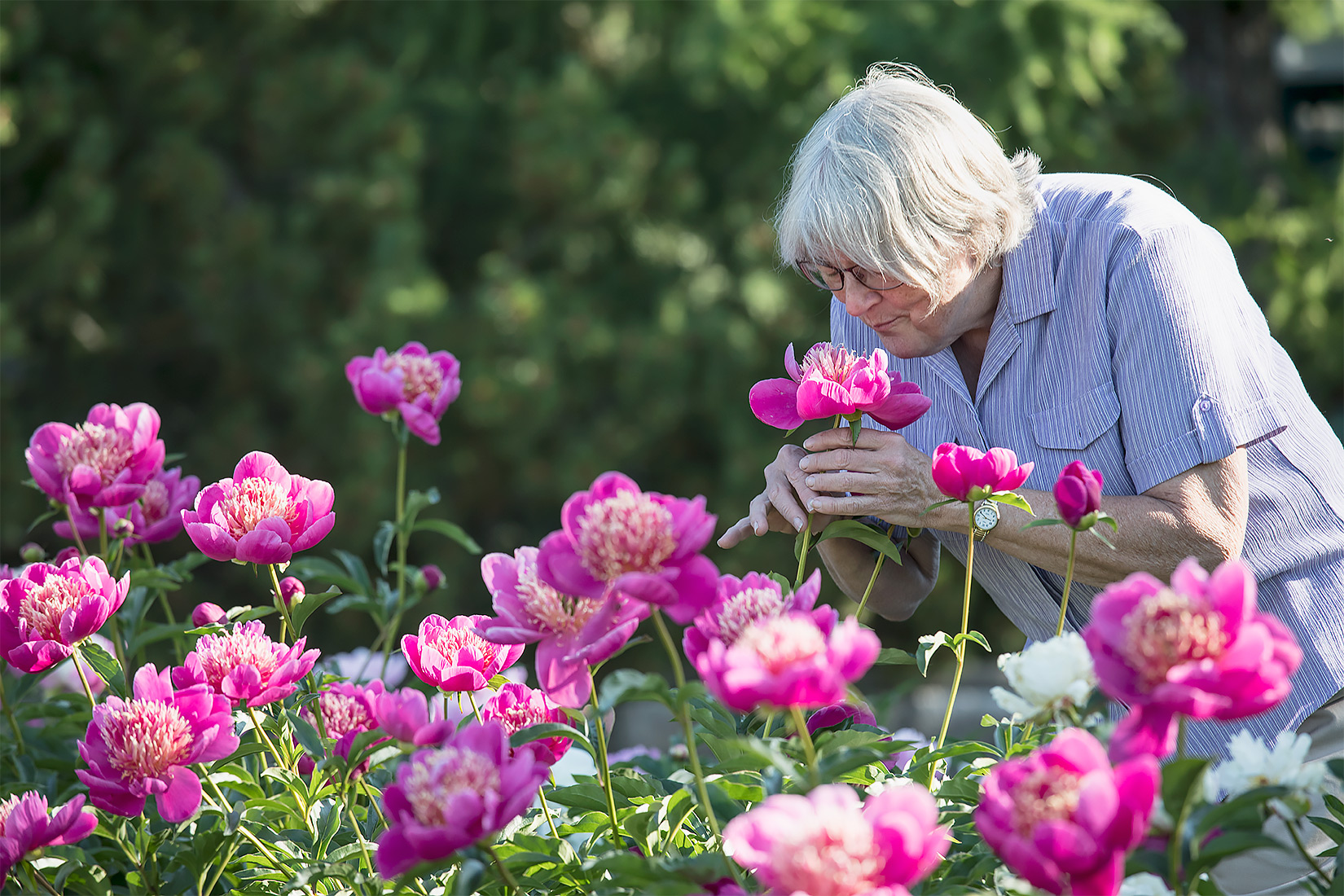
Pat Holloway, who first promoted peony production in Alaska while a UAF horticulture professor, enjoys a bloom of the Leslie Peck variety in early July 2017 at the Georgeson Botanical Garden.
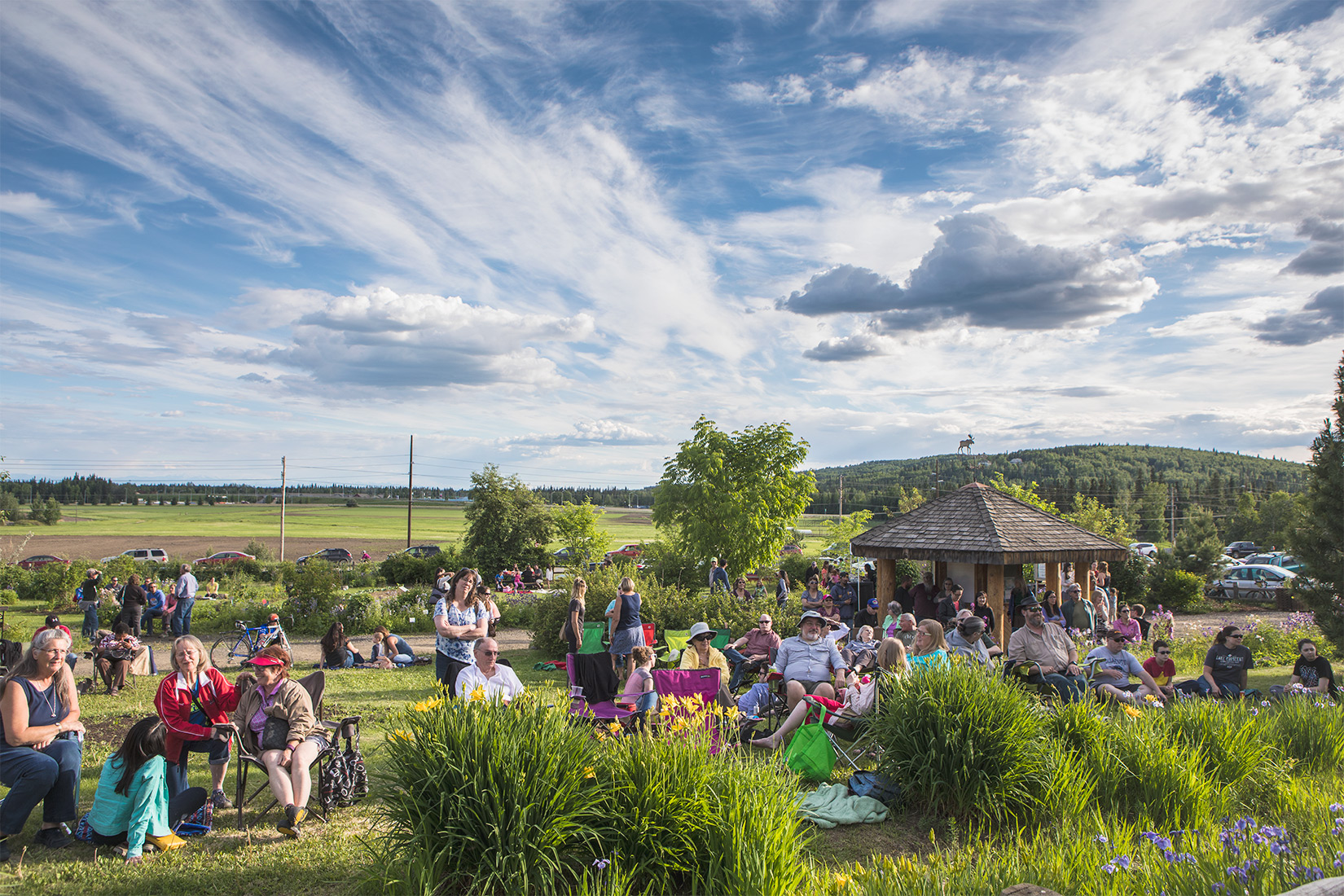
People gather at the Georgeson Botanical Garden for a musical performance in June 2017. UAF Summer Sessions arranges the Music in the Garden series of concerts on Thursday evenings in summer.
UA research has continued in Alaska-based livestock feeds, including fish meal and barley additives.
The most successful livestock project at UAF kept its aim closer to home. Reindeer research, which has been conducted in Alaska since the 1920s, was shifted to UAF oversight in 1983. The program has provided Alaska herders with education about breeding and offered guidelines for slaughtering and butchering.
The UAF program also underscores the do-it-yourself nature of agricultural research in Alaska — no other school in North America conducts reindeer research.
“We’re it, which is cool but it’s also frustrating,” said Gregory Finstad ’81, ’08, who manages the program. “In the beef industry there are dozens of universities doing a diversity of research. We have to do everything.”
Other early crop innovations that emerged from the university have helped shape farming in the state.
Georgeson became well-known for giving free seeds to Alaska pioneers, with the condition that they write him back and tell him how their plants fared. The effort allowed him to compile a basic record of how plant varieties grew throughout Alaska. Those records led to the broad distribution of many staples of Alaska gardens, most notably the Sitka-hybrid strawberry, which is grown throughout the state today. That tradition continues today at UAF’s Georgeson Botanical Garden and numerous seed societies established across Alaska.
The quest for hardy crops didn’t end with Georgeson. During a busy period from 1953 to 1987, the Agricultural Experiment Station enjoyed a period of innovation that would have made the horticulturist proud. More than 40 strains of Alaska crops were developed, from Alasclear potatoes to Weal barley.
Pat Holloway, a retired UAF horticulture professor, said UAF’s Don Dinkel revolutionized Alaska gardening in the 1960s by figuring out that plastic mulches were effective at warming soils. The professor’s unorthodox technique has become a standard remedy for growing in cold garden beds.
We could close the loop on peony seasons and make it a year-round flower.”
“He did all of the research to figure out if that would be useful, and it’s everywhere now — he was way ahead of his time,” Holloway said. “That’s part of the experiment station.”
Perhaps the most influential bit of ag research was sparked by a tidbit that Holloway overheard at a greenhouse conference in 1999. A flower grower mentioned that peonies, a beloved decorative flower, bloomed at a different time of year in Alaska than anywhere else in the world.
That detail made Holloway wonder whether the state could fill a small void in the world peony market, which led Sen. Ted Stevens to include $13,000 in an earmark to pay for peony plants and roots at UAF.
Two years later, a vendor in London cold-called Holloway at her office. He was ready to place an order for distribution — 100,000 stems a week. At the time UAF, with a modest 20-by-60-foot plot, was the only peony grower in the state.
“I was just dumbfounded,” she said. “I thought, ‘What in the world is going on?’”
That validation has led to a peony boom in Alaska during the past decade. It’s spurred more than 100 farmers to plant the flowers, which can sell for as much as $5 a stem. A peony growers association has bloomed around the young industry, which has been called Alaska’s next big export crop.
“We could close the loop on peony seasons and make it a year-round flower,” Holloway said. “That’s something everyone in the world wants.”
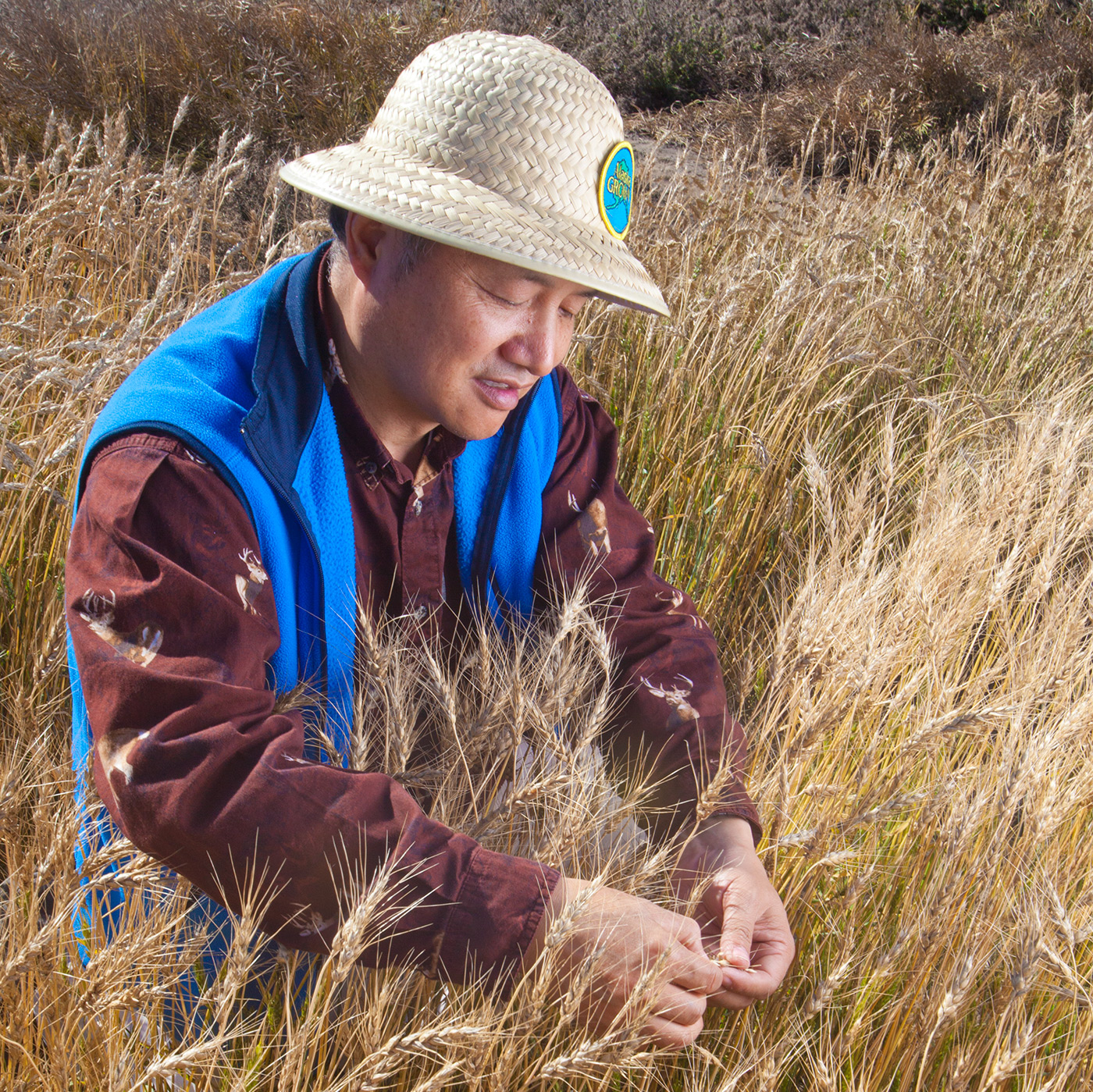
Mingchu Zhang, professor of agronomy and soil sciences with UAF’s School of Natural Resources and Extension, samples mature wheat in 2011. The wheat is being studied as a potential Alaska crop.
Early agricultural roots
Those victories and challenges emerged from a university that has often been conflicted about its agricultural roots. Holloway said there has always been a tension between academics and agriculture, even among those who established the college.
Wickersham loved the potential of a land-grant institution, selecting a location next to the modern-day Fairbanks Experiment Farm because he knew the nearby fields would be conveyed as part of the school’s mission. But Bunnell faced criticism for how he carried out that role. Congress replaced Bunnell as director of the experiment station in 1947, upset that federal funding seemed to be going more toward University of Alaska operations than farm research under his watch. The station remained part of the university and has continued under UAF to this day.
But in many respects, through changes in Alaska and its university system, the underlying goal remains the same today as it was a century ago. One of the primary arguments for supporting agricultural research in Alaska is due to a bleak reality: Residents of the state need to do a better job of feeding themselves.
In the early 20th century, small farms and dairies supplied a sparse population of settlers, but not without the help of food shipments from the Lower 48. Alaskans are even worse off today, said Alaska Farm Bureau President Bryce Wrigley. The state imports more than 95 percent of its food, which he said sets up its residents for immediate shortages if that flow is ever crimped.
Wrigley believes developing crops that are well-suited for Alaska is a key to reversing that trend, and that UA has been a leader in that effort. Northern varieties need to be able to mature during a short growing season, and ideally produce good yields during that time.
He cites the UAF-developed Sunshine barley variety, a hull-less grain with stiff stalks that can withstand a harsh winter. He has about 150 acres of Sunshine barley planted at his Delta Junction farm, which he has used to make flour since 2011.
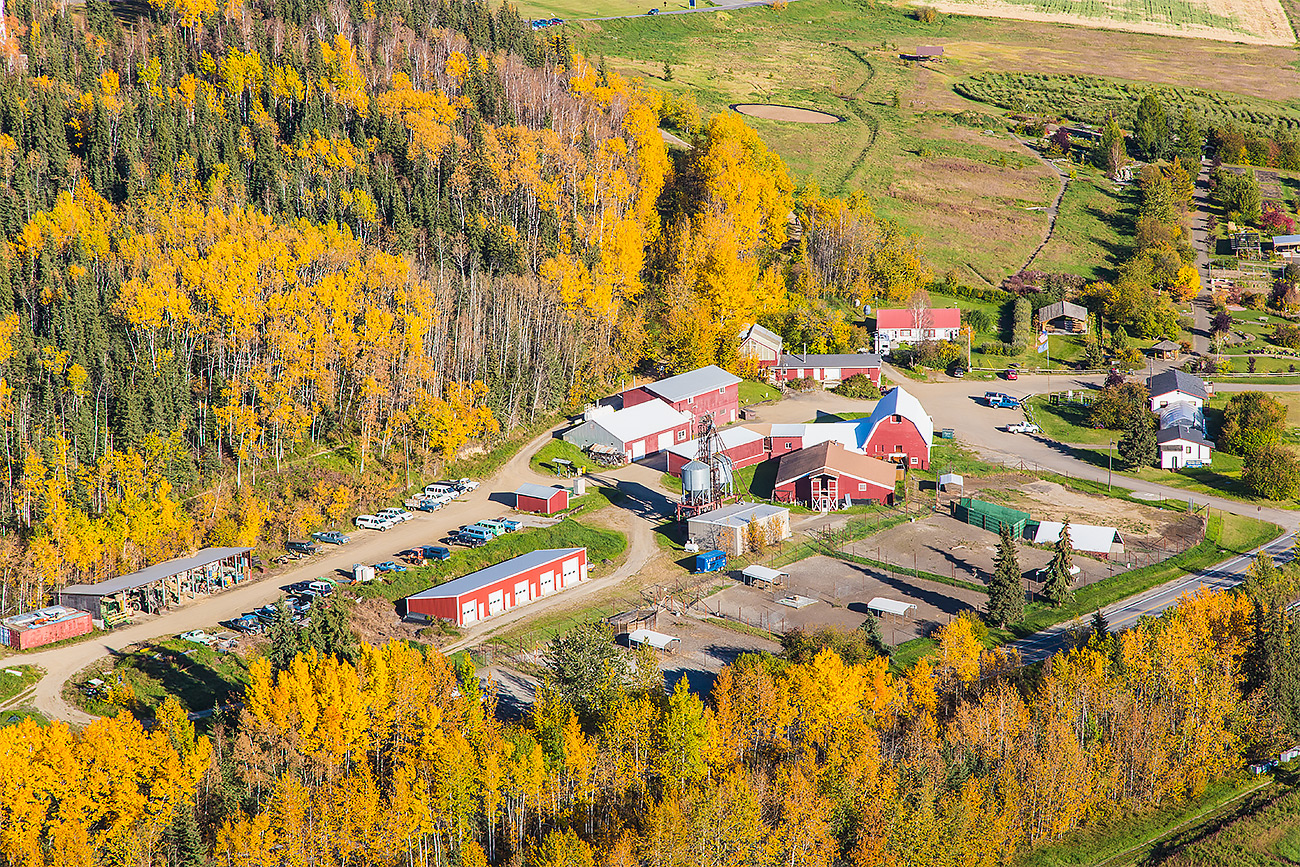
Fall colors brighten the hillside surrounding the Fairbanks Experiment Farm on Sept. 17, 2014. The farm was founded on this site in 1906 as one of several federal agricultural experiment stations in Alaska. It later became part of the university.
Wrigley said it’s important that the state continue to fund ag research for the North, even in an era of tight budgets.
“There’s nobody else who’s doing that right now,” Wrigley said. “It’s something we need to maintain our food security up here.
Finstad said that reality is one of the best arguments for continued reindeer research, since it bolsters a product that is well-suited to Alaska. He believes many Alaskans aren’t focused enough on where their food is from, but said those priorities could change quickly.
“I think it’s going to take a severe catastrophe to scare the crap out of everyone,” he said.
Even amid that reality, Lewis said she can’t help but see the university’s influence in gardens and farmers markets throughout the state. Hoop houses that cover rural vegetable beds are a remnant of outreach and education from a half-century ago. The locally grown potatoes, strawberries and cabbages that feed Alaskans now are often a product of years of research at a university farm.
“UAF should be proud of that work,” she said. “It should blow its own horn about that.”
Holloway believes the legacy of agriculture around the Fairbanks campus runs even deeper. Those fields of grain and vegetables set apart the one-time mining town from other Alaska communities that boomed and quickly disappeared.
“I think that’s one reason why Fairbanks didn’t fade away like other gold rush towns,”
she said. “Agriculture brought stability to this area and gave people a reason to
be here.” ![]()



